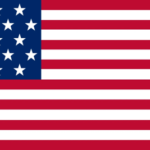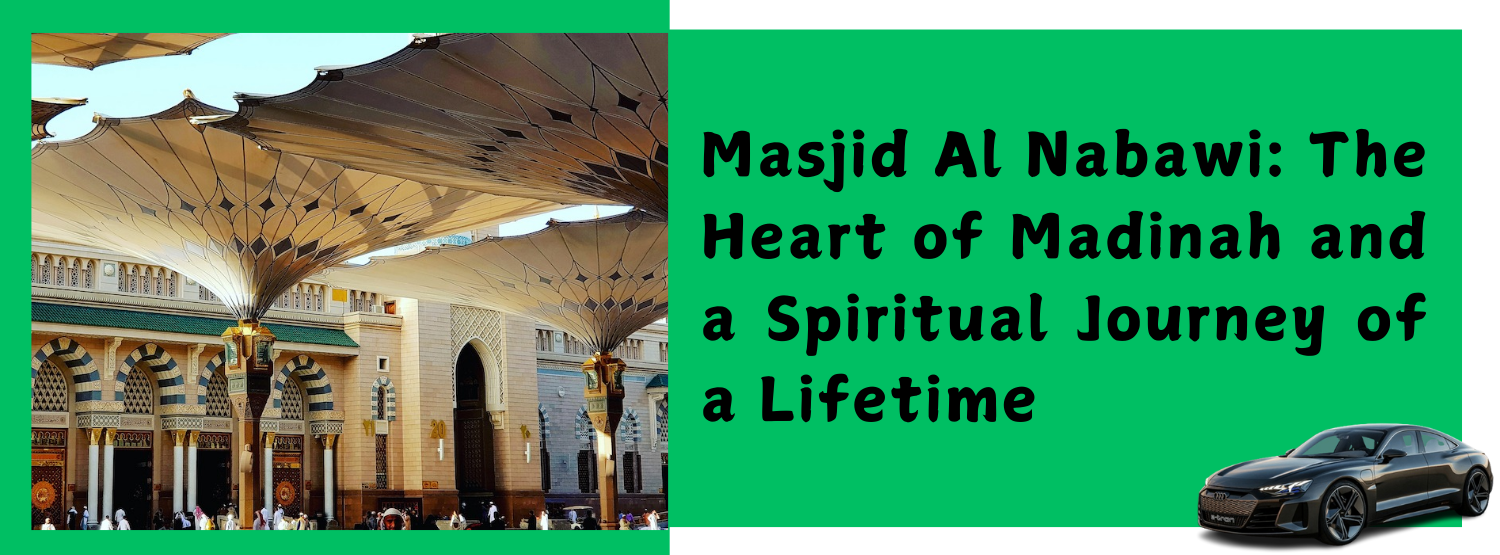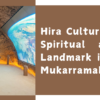Visiting Masjid Al Nabawi: The Heart of Madinah and a Spiritual Journey of a Lifetime
Madinah, the City of the Prophet, holds a special place in the hearts of Muslims worldwide. At its core lies Masjid Al Nabawi, the Prophet’s Mosque, a sanctuary of peace, spirituality, and history. For millions of Muslims, visiting Masjid Al Nabawi is not just a religious obligation but a deeply emotional and transformative experience. It is the second holiest site in Islam, after Masjid Al-Haram in Makkah, and a place where the soul finds solace and connection to the divine.
A Historical and Spiritual Legacy
Masjid Al Nabawi was established by the Prophet Muhammad (peace be upon him) in 622 CE, shortly after his migration (Hijrah) from Makkah to Madinah. What began as a simple structure made of palm trunks and mud bricks has since evolved into one of the most magnificent mosques in the world. The mosque has undergone numerous expansions over the centuries, yet it has retained its spiritual essence and historical significance.
The Prophet (peace be upon him) once said, “One prayer in my mosque is better than one thousand prayers in any other mosque except Al-Masjid Al-Haram.” (Sahih Bukhari). This Hadith underscores the immense reward and blessing associated with praying in Masjid Al Nabawi. For visitors, it is an opportunity to draw closer to Allah and follow in the footsteps of the Prophet.
The Green Dome and the Prophet’s Resting Place
One of the most iconic features of Masjid Al Nabawi is the Green Dome, which stands above the Prophet’s burial chamber. Beneath this dome lies the final resting place of the Prophet Muhammad (peace be upon him), as well as his closest companions, Abu Bakr Al-Siddiq and Umar ibn Al-Khattab (may Allah be pleased with them). While visitors are not permitted to enter the chamber itself, they can offer their respects and send salutations (Salawat) to the Prophet from the adjacent area.
Standing near the Rawdah, the area between the Prophet’s pulpit (minbar) and his resting place, is a profoundly moving experience. The Prophet (peace be upon him) said, “The area between my house and my pulpit is one of the gardens of Paradise.” (Sahih Bukhari). Many visitors strive to pray in this blessed space, known as the Riyad al-Jannah (Garden of Paradise), as it is believed to be a place where prayers are readily accepted.
The Expansive and Serene Architecture
Masjid Al Nabawi is a marvel of Islamic architecture, blending historical elements with modern design. The mosque can accommodate over a million worshippers, with its vast courtyards, towering minarets, and intricately designed domes. The recent expansions have incorporated state-of-the-art facilities, including air conditioning, retractable umbrellas, and advanced lighting systems, ensuring comfort for all visitors.
The mosque’s interior is adorned with beautiful calligraphy, marble columns, and lush carpets. The atmosphere is one of tranquility and reverence, with the soft hum of prayers and the recitation of the Quran filling the air. The sight of the mosque illuminated at night, with its golden minarets and the Green Dome glowing softly, is nothing short of breathtaking.
Practical Tips for Visitors
- Timing Your Visit: Madinah is less crowded during non-peak seasons, such as during Ramadan and Hajj. This allows for a more peaceful and reflective experience. However, visiting during Ramadan offers a unique spiritual atmosphere, with Taraweeh prayers and the mosque beautifully lit.
- Dress Modestly: As with any Islamic site, modest attire is required. Men should wear loose-fitting clothing, and women should wear an abaya and headscarf. Many shops near the mosque sell abayas and other modest clothing.
- Respect the Etiquette: Maintain a respectful demeanor at all times. Avoid raising your voice, pushing, or engaging in any behavior that may disturb others. Remember, you are in a sacred space.
- Visit the Rawdah: If you wish to pray in the Rawdah, arrive early, as it can get crowded. Women have designated times to visit this area, so check the schedule in advance.
- Explore the Surroundings: Take time to visit other historical sites in Madinah, such as Quba Mosque (the first mosque in Islam), Mount Uhud, and the Qiblatain Mosque. Each site offers a unique connection to Islamic history. To make your travels more convenient, consider renting a car with UTS Car Rentals. With a rented car, you can explore these sites at your own pace and enjoy the flexibility of traveling on your schedule.
- Stay Hydrated and Rested: Madinah’s climate can be hot, especially during the summer months. Carry a water bottle and take breaks as needed. Many hotels and accommodations are within walking distance of the mosque, making it convenient to rest and recharge.
Rent a Car with UTS Car Rentals
Exploring Madinah and its surrounding historical sites is made easier with the convenience of a rented car. UTS Car Rentals offers a wide range of vehicles to suit your needs, whether you’re traveling solo or with family. Renting a car allows you to visit Quba Mosque, Mount Uhud, and other significant landmarks without relying on public transportation or taxis. It also gives you the freedom to explore at your own pace, making your spiritual journey even more fulfilling.
UTS Car Rentals is known for its reliable service, affordable rates, and well-maintained vehicles. Booking a car is simple, and their customer support team is always ready to assist with any queries. Whether you need a compact car for easy navigation or a larger vehicle for family travel, UTS Car Rentals has you covered.
A Journey of the Heart
Visiting Masjid Al Nabawi is more than a physical journey; it is a journey of the heart and soul. It is a chance to walk in the footsteps of the Prophet, to reflect on his teachings, and to strengthen one’s faith. The sense of peace and spiritual fulfillment that comes from being in this sacred space is unparalleled.
As you stand in the courtyard of Masjid Al Nabawi, surrounded by worshippers from every corner of the globe, you are reminded of the universality of Islam. It is a place where differences fade, and the unity of the Ummah is palpable. Whether you are offering Salah, reading the Quran, or simply sitting in quiet contemplation, you are part of a timeless tradition that connects you to the Prophet and to Allah.
In the words of the Prophet (peace be upon him), “Whoever visits me after my death is like he who has visited me during my life.” (Sahih Muslim). May your visit to Masjid Al Nabawi be a source of blessings, inspiration, and spiritual renewal. And with the convenience of UTS Car Rentals, may your journey through Madinah be smooth, comfortable, and memorable. Ameen











